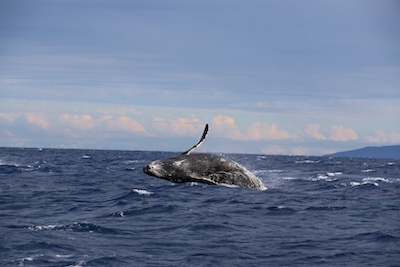Pacific Grey whales Fact Files

What are grey whales?
The grey whales, scientifically known as Eschrichtius robustus, are known as California grey whales, pacific grey whales too. They usually migrate sea to sea for breeding feeding yearly.
General information
Grey whales have a bump and an edge of sharp knocks along their backs rather than a dorsal blade. They are a sort of baleen whale, which implies they channel food from the water through exceptional bristly designs in their mouths. Grey whales remain nearby shore and feed in shallow water. Their notable relocations take them among taking care of and rearing regions, swimming as much as 12,000 miles full circle.
Fundamentally imperiled western dark whales move into their late spring, taking care of grounds close to Sakhalin Island, Russia, in late May or early June and get back to their colder time of year taking care of feet in the South China Sea in late pre-winter.
The quiet, warm waters of the tidal ponds are a protected spot for youthful whales, liberated from hunters like executioner whales. Local people here lovingly call dark whales "cordial ones" as they have a strange inclination to move toward whale-watching boats and look at the tenants.
Some facts about pacific grey whales
They’re large:
Alright, they're not the most incredible whale in the sea. They rank eighth on the world whale scale, simply behind humpback and sei whales. But 35 tons and 15 meters sound quite enormous to us. A few people are considerably more significant than that. Stack five male African elephants onto a scale, and you get the picture.
They accompany drifters:
Pacific grey whales are dark with whitish blotches. They weren't brought into the world with the more significant part of those flaws, however. The skin—particularly around the head, flippers, and tail—is home to many round, white barnacles. Up to 400 lbs. of them! Furthermore, creeping among them are orange whale lice—each about the size of one of our thumbnails. Up to 100,000 lice have been found on a solitary whale!
They're monster vacuum cleaners:
Dark whales are baleen whales, which imply they don't have any teeth. All things being equal, they channel their food through baleen plates that hang down from the top of their mouth. Baleen is made of keratin, equivalent to our fingernails. Grey whales have 130-180 sets of short baleen plates—the least of any baleen whale.
They're versatile voyagers:
Pacific grey whales didn't get the update and try not to go right back up to the Arctic on their toward the north movement. Indeed, why swim that entire path when there's an everything you-can-eat buffet en route? Like other baleen whales, grey whales quick for quite a long time toward the south relocation or the rearing season. By late winter, they're darned hungry.
They're marvelous mothers:
Females bring forth a solitary calf, generally around the finish of the southward relocation in pre-winter. What could be compared to 10 child elephants! They develop quickly on milk that is about 53% fats and is weaned at around seven months. Newborns are usually 5 feet long, weigh almost 900 kg.
More info on whales
- Humpback Whale Facts
- Pacific Grey Whale Facts
- Blue Whale Facts
- The ultimate sea giants
- Spectacular sea beast
- The beauty of the Oregon coast
